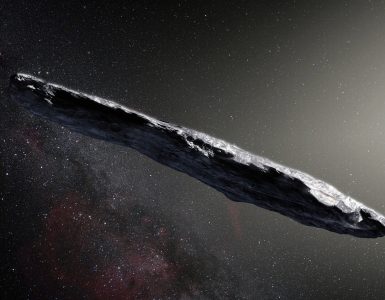by Akil Wingate
A star is born.
Decades ago, an aging hairdresser decided to put down his wig-making tools and rummage through his household goods. His curiosity led him to create a virtually indestructible substance that adhered to surfaces and, once applied, resisted temperatures in excess of 1200 degrees Fahrenheit (roughly 650 degrees Celsius). Everyone from the UK Ministry of Defense to the United States’ NASA clamoured at the coiffeur-turned-inventor’s door for a look at this product. Many government organizations wanted to make him an offer.
However, rather than sell the secrets of his product to the highest bidder, he carried them to his grave. The only original formula of this product, dubbed Starlite, now rests in the hands of his children.
Twinkle, twinkle, little star…
Starlite’s humble beginnings started with its creator, Maurice Ward. Known as a jack of all trades, Ward bounced from various odd jobs until he settled happily into the role of a woman’s hairdresser. He began to look for new ways to create dyes for wigs and improve his set of tools by making his own. This led him to rifle through his pantry in hopes of finding the right combination of ingredients to take his hairdressing career to the next level.
It wasn’t until the Air Tours Flight 28N tragedy in 1985 that Ward, who lived not far from Manchester, began wondering if the tragedy could have ultimately been averted. Flight 28N’s left engine exploded before take off, trapping passengers inside the plane. Fifty-five people died from smoke inhalation. It was this tragedy that sparked Ward’s interest in fire-proof plastics.
Ward had no background in science, nor had he been formally educated as an engineer, chemist, or designer. He created a recipe of goods that, while useless in his effort to dye wigs, proved to be a virtually indestructible substance. He wondered, could Starlite have saved everyone on board Flight 28N? Can Starlite revolutionize aeronautical and engineering industries?
…how I wonder what you are?
What exactly is Starlite? And what is it made of? And can anyone make or replicate the product?
A viscous substance, Ward’s new invention could adhere to a surface and resist all manner of heat. Such substances, also known as intumescents, swell and increase in volume when exposed to a heat source, making them perfect for fire protection.
Mark Miodownik, a professor of Materials at University College of London and a Materials Scientist and Engineer, had numerous opportunities to test Starlite and communicate with the late Ward’s family. He describes the substance as a paint. “Like a white, viscous liquid once it’s set hard, if you apply heat, and we applied a blowtorch to it, the material itself chars and becomes carbon. And that then becomes this expanding foam of carbon.” Carbon is extremely heat resistant with an incredibly high melting point. The “paint” itself produces carbon when burned, thus protecting the surface it is applied to.
Can anyone make an intumescent like Starlite? Effectively, yes. Ward’s daughter has consistently said in interviews that Starlite was rendered from all natural ingredients found around the house, even used as feed for their dogs and horses.
The product has even been reverse-engineered by other scientists and companies, boasting up to twenty-one ingredients, including borates (chemical compounds containing boron, like oxyanions) and ceramics. However, the one ingredient most engineers and chemists seem to agree on is polyvinyl acetate (PVA) glue, also known as a form of wood glue.
One of the simpler recipes calls for a mixture of baking soda, glue, and cornstarch. Baking soda by itself is already very heat resistant, but this particular combination yields an intumescent. And, much like the original Starlite, the result creates a thick, viscous substance that shields whatever material it is applied to.
Rising star?
How was Starlite revealed to the world?
Ward chose the biggest platform possible: the BBC’s Tomorrow’s World which aired the episode on March 8, 1990. The TV show pulled the curtain open on the latest inventions and technology every week.
The inventor coated a raw egg with the substance and then proceeded to expose the eggshell to a direct blowtorch. A thick substance swelled and coated the shell of the egg, but it did not catch fire. Then, they cracked open the egg to reveal a raw yolk.
The broadcast left the host and audience stunned. Everyone from NASA to the UK Ministry of Defense (MOD) wanted to test the substance and make Ward an offer for Starlite.
Keith Lewis, a former MOD Scientific Officer, was one such person tasked with testing the limits and capabilities of Starlite. Ward had reluctantly given Lewis samples to test, wary that the MOD might try and reverse-engineer Ward’s discovery without ever entering into a business deal.
The results showed that Starlite’s transformation into a dense, thick substance is only dependent on how much heat exposure it gets. And when the MOD tested longer bursts, Starlite performed even more remarkably.
It was after these findings by the MOD that NATO soon expressed interest. NATO’s ultimate question: could Starlite withstand a nuclear blast?
NATO carried out tests at the Atomic Weapons Establishment (AWE) at Foulness Island, United Kingdom, and simultaneously at the White Sands Missile Range in New Mexico, USA. They used a four-kiloton conventional blast to test its resistance and simulate the blast power of nuclear explosions. And Starlite ultimately proved thermal resistant, withstanding temperatures upwards of 10,000 degrees Celsius.
But is the product as invincible and resistant as Ward and the media claim? Or is Starlite merely a myth, contrived with smoke and mirrors?
Or falling asteroid?
Ward’s invention, while remarkable, does have its kryptonite. Lewis was keen to stress in a BBC interview that Starlite is “thermal blast resistant…if it doesn’t get torn to bits.” While blast exposure from a nuclear explosion could be repelled by the substance, a direct hit from a nuclear missile or any sort of powerful projectile would penetrate the substance and the material it was meant to protect. It has the potential to save the lives of people trapped in a burning high rise, similar to the June 2017 Grenfell Tower tragedy in London and the February 2019 building fire in the 16th arrondissement in Paris; however, it would do very little to protect against attacks such as 9/11.
Another issue with this–and other–intumescent products is, that while Ward claimed his Starlite was between eighty and ninety percent organic, many of the products on the market today are filled with inorganic chemicals and materials. Due to the chemical bi-products burned off from intumescents, governments have instilled hefty regulations.
Star bright.
After the BBC aired Ward’s demonstration, the former hairdresser faced new challenges. He refused to work with many potential buyers. Negotiations ceased. His lab was broken into. Samples, important data, and computers were stolen. Phone calls from potential buyers stopped. Rumors and conspiracy theories spread rampantly. Starlite appeared to be vanishing from the spotlight while markets were flooded with other intumescent products.
Where is it now? Did Starlite die with its inventor? Ward’s daughter, Nicky Ward McDermott, co-founded Starlite Technologies with Chris Bennett, a Starlite enthusiast who pursued the invention for nearly two decades. McDermott held onto the recipe long after Ward died and persevered despite all the challenges faced. And now, the new company is actively courting investors and firms in hopes of marketing Starlite for practical everyday application. But is it too late?
While Starlite’s future is uncertain, what is certain is that science and technology have made great strides in improving intumescents and making them readily available for the private and public sectors around the globe. Perhaps McDermott and Bennett will have the success Ward never saw. Perhaps one day, in the near future, Starlite will brighten the world and protect people from additional tragedies.





Add comment